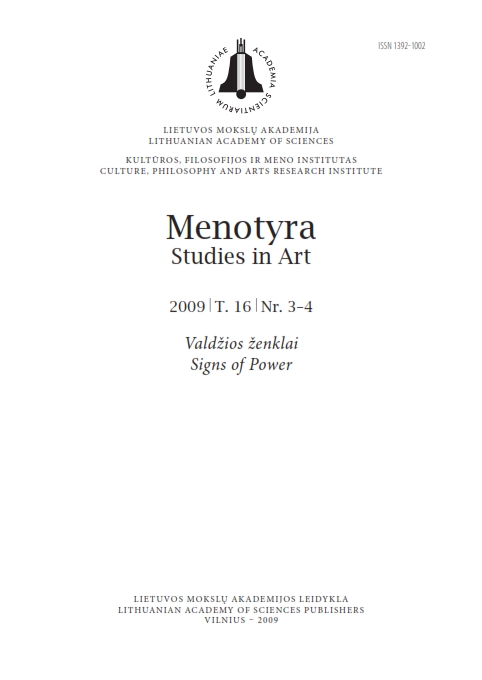Valdovo vaizdinys Stanislovo Augusto karūnavimo iškilmėse Vilniuje
The image of the ruler at the crowning ceremony of Stanisław August in Vilnius
Author(s): Lina BalaišytėSubject(s): Visual Arts
Published by: Lietuvos mokslų akademijos leidykla
Keywords: Stanisław August Poniatowski; ruler; image; festival; occasional decorations;
Summary/Abstract: The focus of the article is on the ceremony held on the occasion of crowning Stanisław August Poniatowski in Vilnius and the symbolism of its décor related with the system of images of power that functioned in that period. This décor is interesting in that it was created in the city and reflected the ruler’s image that had been formed in an urban environment. The author of the article analyzes how and to what extent the image of the new ruler formed by the Poniatowski court, the monarch’s portrait represented in occasional texts operated in the Vilnius community. The creators of the Vilnius décor basically followed the classical canon of a ruler’s virtues. A similar ruler’s image was created on the occasion of crowning the predecessors of Stanisław August Poniatowski. However, in the new image, the motifs of a ruler as a protector of faith, frequently found in earlier periods, or a wise ruler who dedicates all his strength to working for the sake of his homeland, actualized in the texts of the epoch of Enlightenment, were not emphasized. In the symbolism of the crowning ceremony in Vilnius, more important were the expectations of the city, related with the coming of a new ruler, above all – security and concord. The role of a ruler-protector, a guardian of concord was particularly emphasized. In the pieces of the set commissioned by the city, themes important for the noblemen’s environment, e. g. motifs of freedom or the homeland’s glory that increased with the coming of a new ruler, are not common. A rather impersonal relation of the city with its new ruler can be noticed. The symbolism of the décor was little related with the concrete personality of the crowned ruler: Stanisław August’s individual virtues, widely represented even in the earliest works, e. g. his education and patronage of science and arts, were not emphasized; Stanisław August’s armorial symbolism and a motif of his descent from the Jagiellonian dynasty was not widely used.
Journal: Menotyra
- Issue Year: 16/2009
- Issue No: 3-4
- Page Range: 91-99
- Page Count: 9
- Language: Lithuanian

